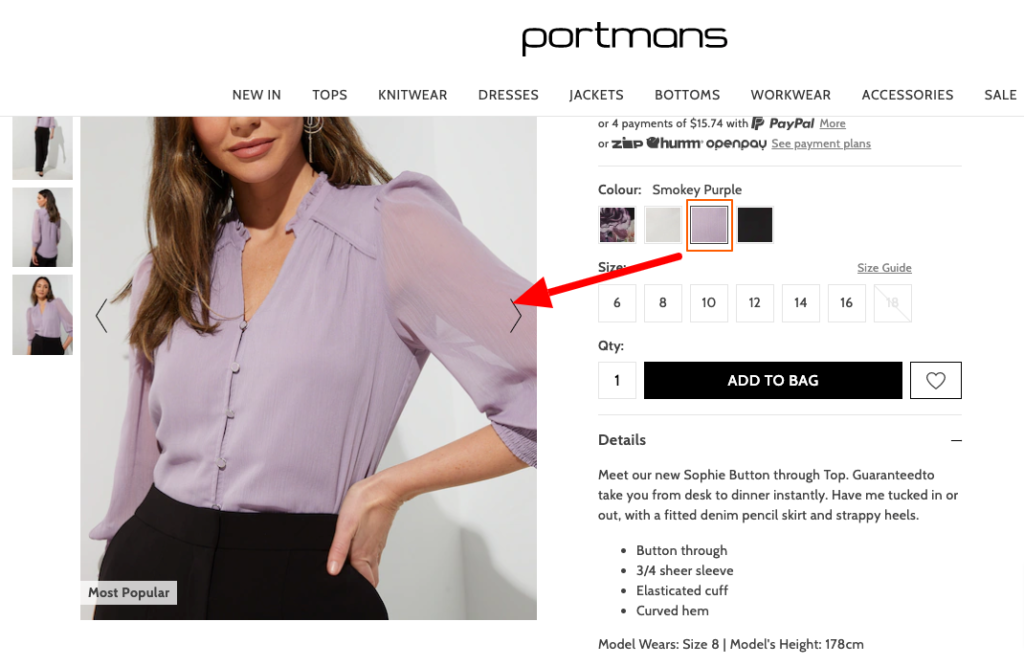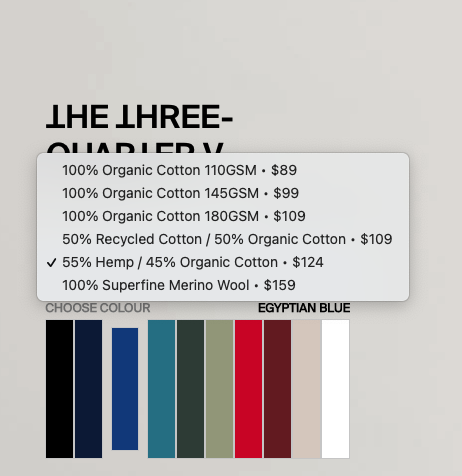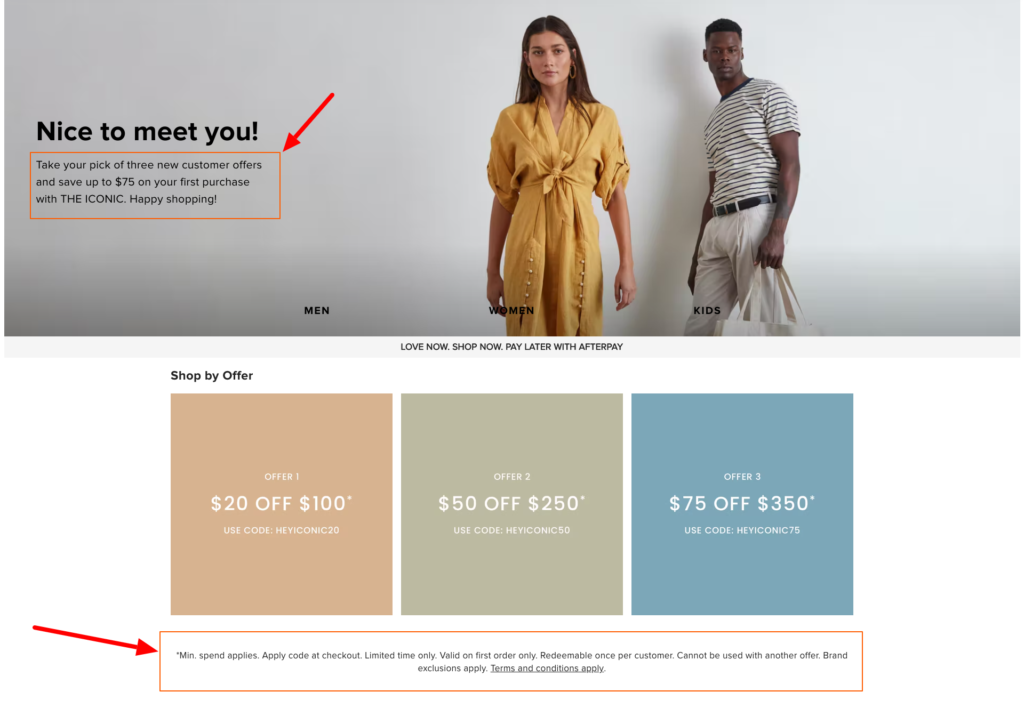
It happens to the best of us sometimes.
Customer complaints are the bane of even the most accomplished and experienced sellers in the ecommerce industry.
From wrong orders and returns, to shipping price confusion, your best defence is prevention, with fast and fair resolution a close runner-up.
Here are five of the best ways to prevent, reduce and fix common customer complaints.
1. Wrong (or Forgotten) Items in an Order
One of the top complaints from ecommerce customers? Receiving the wrong item.
This can happen for a few reasons, but let’s focus on two fairly common ones.
Issue: An order has incorrect items or product details.
Example: A customer ordered the wrong product by accident, or due to confusion about a product’s description or image – they thought they were ordering a red shirt but received a blue one instead. How can you minimise these mishaps?
Quick Fixes
If your product has several variations, the best way to communicate this to customers is using crisp, prominent images. This is especially important with online selection options.
Say you’re selling a shirt that comes in 5 colours. Rather than simply having a colour button to select, make sure that the colour of the item in the image changes to reflect the selected colour of the item (see examples).


Issue: There are unexpected or missing items in an order.
Occasionally sellers may include additional or incorrect items in an order. Sometimes this happens with packing mistakes or mislabelling during shipping.
Quick Fixes
Include a copy of the purchase order with the goods so customers can easily check off what they received against what they ordered.
If any items are on backorder or will be shipped separately, make sure those items are clearly marked.
The purchase order is also a great place to include clear instructions for returns policies and contact details, days and times for customer service.
Beyond that, it’s a good idea to provide free return shipping for incorrect goods, and perhaps offer customers a limited discount coupon for any inconvenience.
2. Product Quality
Even the best ecommerce business can get a complaint about poor product quality. The issue may be as simple as a customer receiving an item that looks different than what they ordered, or as complicated as receiving a product that doesn’t work at all.
Having clear customer service guidelines for your team will help ensure that these issues are handled well and everyone knows what to expect.
Issue: The product received doesn’t match the picture or description.
Quick Fixes
Ask the customer to clarify their expectations and compare this to the product picture and descriptions. If they’re not up to par, change them quickly.
If the customer is right—and they often are—send a replacement or refund and thank them for their understanding.
Issue: Customers believe they have received a poor quality product when in reality, it may be due to poor packaging or storage of the product.
Quick Fixes
First, check where your inventory is stored. Is it safe from the weather, pests and other damage? Can you find any product issues matching the complaints?
Next, check to ensure that your packaging meets the requirements of your couriers or logistics partner. (Check out our favourite tips to improve packaging.)
If everything is fine with your packaging and storage, then ask your customers for more detailed feedback about the product quality.
Issue: Your customer believes the product doesn’t work as expected.
Quick Fixes
Ask the customer to return the product along with a detailed description of the fault and what they may have done to try and fix it.
Let them know that your team will try to view or replicate the issues, and provide them with the appropriate refund or replacement. Explain how long this process may take.
If necessary, you can also communicate with your supplier or manufacturer regarding how to prevent or resolve this type of issue with future orders.
3. Product Price
Another frequent source of customer complaints is pricing. There are a lot of reasons why customers may be unhappy with prices, but it’s very often a discrepancy between what they expected to pay and what they actually paid.
How can you resolve this tricky issue? It’s all about communicating value.
As a seller, you understand the value of your product: What it does, how it’s made, the quality of the manufacturer, and so forth. But if you fail to clearly communicate this to your customer, they won’t be able to “compare apples with apples” and might view your product as overpriced.
Quick Fixes
Clearly communicate the inherent value in your items and your business processes. This could include the materials, your manufacturing process (like being hand-made to order), sustainability and ethics, certifications, guarantees or warranties.
You may also want to offer different product options at different price points, so customers are able to choose which one suits their budget.
A great example here is Citizen Wolf: The sustainable fashion company offers products in a range of fabric compositions and clearly displays the price for each option in the product selection process (see image below). Plus, it highlights key value indicators, like free alterations, ethical certification and “48% less carbon” details.

4. Coupon Use and Discount Codes
Discount codes and coupons are a fantastic tool for increasing average order value, but they can also be fraught with difficulty – especially if the offers aren’t communicated properly, or worse, they don’t work and gum up the ordering process.
Issue: Certain codes don’t work on checkout.
Quick Fixes
First, double check all discount codes in your website’s backend: look for spelling errors, issues with capitalisation, discount expiry dates, selected items and ranges. Then, check those against the promotion sources (ads, emails, affiliate sites and links, etc.) to resolve any issues blocking the codes from working.
When providing discount codes, make sure the code expiry dates are prominent. This not only helps reduce errors, but also helps motivate customers with a bit of urgency/FOMO.
If codes have certain conditions, like only one code can be used at checkout, make sure to include this information as well when providing the code, and again at checkout close to the code entry field.
Issue: Coupons are too confusing.
Quick Fixes
Be upfront about what coupons you’re offering, what they include, any minimum spend required and whether they can be stacked or not.
Example: The Iconic has a clever way of promoting their three new site member offers, highlighting each of the different offers to suit different shopping budgets. Plus, each offer clearly shows the minimum spend required (see image).
Note: Unlike many online offers, these codes don’t require customers to sign up for a newsletter in order to access them and see the conditions. (After all, they’ll get the email address when the orders are placed, right?)

5. Shipping Costs
Let’s face it, some customers will complain about shipping costs, even reasonable ones.
These days, expectations are high for free shipping on most online purchases, but for small businesses that aren’t able to offer such an option, it can be a real struggle.
Fortunately, there are a few ways to reduce shipping costs and still give your customers an excellent experience. Here are some tips for resolving your customers’ biggest complaints about shipping costs and options.
Quick Fixes
Offer a variety of shipping options and prices.
The Transdirect shipping widget is the perfect addition to your site’s checkout area, allowing customers to select their preferred courier at the price that’s right for them. It’s a simple ecommerce integration that helps to provide your customers more flexible shipping solutions and can save you a bundle as well.
Be transparent about how much each product will cost to ship and why.
Shipping cost factors such as product weight or size, bulky items, fragile items, signatures required on delivery, or fulfilment locations (and more) can all contribute to your shipping costs. In instances like these, you might look at ways to clearly set customer expectations on pricing for special shipping options, rather than increasing the product prices.
Consider offering free returns if they’re feasible for your business.
You may not be able to offer free shipping, but offering free returns is often the next best thing to enhance customer satisfaction and goodwill. The cost could be significantly less to your business, while helping to retain customers with a great followup experience.
Enhance customer satisfaction with first-class shipping
There’s no denying that customer satisfaction is hugely important as it helps drive repeat business and future sales. The lesson for sellers is clear: while complaints are inevitable, they don’t always have to be a negative experience.
By taking control of your process and looking for opportunities to enhance your customer relationships at the outset, you can master ecommerce customer service.
Start by enhancing your ecommerce shipping options with Transdirect’s shipping integration at checkout. Sign up for a free members account and get started today!
